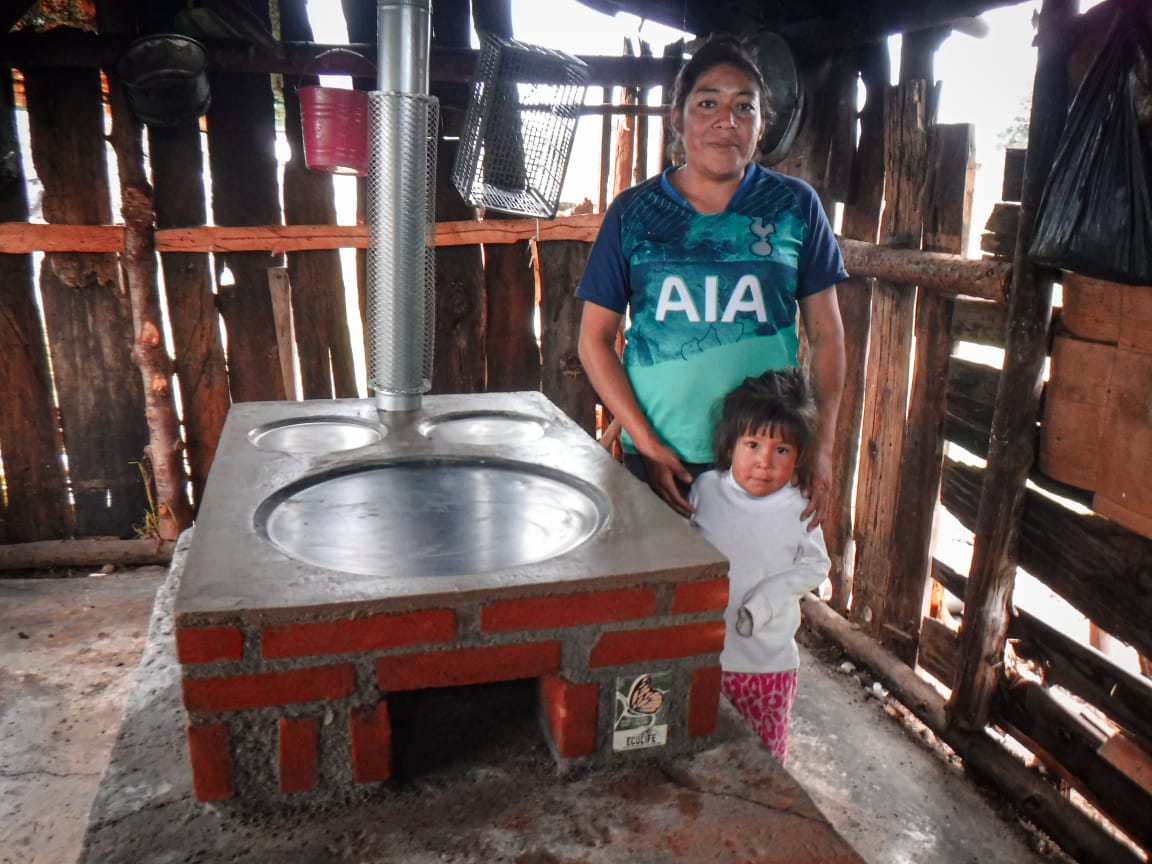SavE Lives and Habitats When You Offset Emissions With Carbon Credits.
Thank you for your interest in supporting ECOLIFE’s emission reduction program! ECOLIFE’s work in Mexico is certified as a Gold Standard carbon project, allowing us to generate carbon credits. Carbon Credits are verified emission reductions, equal to one ton of carbon dioxide equivalent removed from the atmosphere.
The income generated from the sale of carbon credits provides a sustainable revenue model for the program, allowing us to scale the project and its impact. Carbon credits allow us to build more stoves; saving more lives, protecting more monarch habitat, and reducing more carbon emissions. Investing in ECOLIFE carbon credits not only goes directly to expanding our impact on people and the planet, but it also provides the opportunity to offset YOUR emissions.

Collective Impact
Everyone produces greenhouse gas emissions as part of daily life, travel, or
other activities, but only some people take action to reduce emissions where
they can. Investing in verified emission reductions allows you to offset the
emissions that you are not able to reduce on your own, or that you may not be
able to avoid releasing.
Carbon offsetting is a method of compensating for an equal or greater amount
of emissions compared to the emissions you produce as an individual. Offsetting provides the opportunity for individuals to reduce their negative contributions to climate change while making a tangible impact on the environment through the projects they support.
Purchasing carbon credits for emissions that you cannot reduce on your own is
one of the most meaningful and measurable ways to make a positive impact on
our planet. Offsetting your emissions lessens your personal impact on climate
change and demonstrates your commitment towards a sustainable future.
Program
Details
Travel is an unavoidable part of life for many people, so offsetting your travel is an excellent example of reducing your personal impact on climate change. For example, purchasing 1 carbon credit compensates more than the average emissions for a single passenger coast to coast flight, making a net zero impact on the climate as a result of your trip. You can be confident knowing that your travel has not made a negative impact and that your contribution has gone toward supporting ECOLIFE’s work in Mexico. The emissions produced from your flight were reduced by ECOLIFE’s Patsari stoves.
By purchasing an ECOLIFE carbon credit, you have the rights to use that individual emission reduction. ECOLIFE will retire the carbon credits on your behalf and send you an official retirement certificate containing the serial number of the credits used. Retirement indicates the official claiming of emissions reduced, the carbon credit has been used to reduce emissions.
Not sure how much to offset? No problem! Use the average carbon footprints below as a frame of reference to decide how many carbon credits you would like to purchase.

Average
Carbon footprints
household
- US Individual per year = 17 tons
- US Household of 4 = 68 tons
Air travel
- Round trip flight 1 person LAX-JFK = .89 tons (1 ton)
- Round trip flight 1 person LAX-Paris = 2.45 tons (3 tons)
- (2) flights 10 – 12 hours = 3.78 tons (4 tons)
- (4) flights 7-9 hrs = 5.29 tons (6 tons)
Ground travel
- Passenger Vehicle (22 MPG) – 10,000 miles = 3.61 tons (4 tons)
- Passenger Vehicle (22 MPG ) – 50,000 miles = 17.46 tons (18 tons)
- Passenger Vehicle (22 MPG) – 100,000 miles = 36 tons
Sea travel
- 14 day cruise on mid-size ship 1 person = 8 tons
SOURCE
EPA Emission Factors for Greenhouse Gas Inventories – https://www.epa.gov/system/files/documents/2023 03/ghg_emission_factors_hub.pdf
Spatial Distribution of U.S. Household Carbon Footprints Reveals Suburbanization Undermines Greenhouse Gas Benefits of Urban Population Density – Christopher Jones and Daniel M. Kammen – Environmental Science & Technology 2014 48 (2), 895-902 – DOI: 10.1021/es4034364 – https://pubs.acs.org/doi/10.1021/es4034364